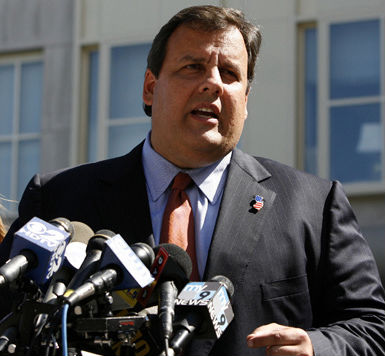 Leo Kolivakis is a blogger, trader and independent senior pension and investment analyst. This post was originally published at Pension Pulse.
Leo Kolivakis is a blogger, trader and independent senior pension and investment analyst. This post was originally published at Pension Pulse.
Lorrie Goldstein of the Toronto Sun reports, Wynne’s pension boondoggle?:
Suppose Premier Kathleen Wynne’s Liberal government forced you into its Ontario Retirement Pension Plan (ORPP) and took 1.9% of your earnings up to a maximum of $1,643 annually for your entire working life.
Suppose it invested this money into poorly-run, money-losing Ontario public infrastructure projects, in which the government partnered with private companies and lost its shirt — and thus your future pension benefits.
Based on the scant information the Liberals are giving out in preparing to implement their ORPP on Jan. 1, 2017, that could happen. Here’s why.
In Finance Minister Charles Sousa’s 2014 budget, here’s how the Liberals explained how they will invest over $3.5 billion annually in mandatory pension contributions.
These will come from more than three million Ontario workers who will be forced into the ORPP because they do not have private pension plans, and from their employers.
(The ORPP will be funded by a 1.9% annual payroll tax imposed on these workers, plus an additional 1.9% annual tax for each employee, paid by their employers.)
“By … encouraging more Canadians to save through a proposed new Ontario Retirement Pension Plan, new pools of capital would be available for Ontario-based projects such as building roads, bridges and new transit,” the Liberals said.
“Our strong Alternative Financing and Procurement model, run by Infrastructure Ontario, will allow for the efficient deployment of this capital in job-creating projects.”
Really? First, the purpose of the ORPP should not be to help the Liberals fund infrastructure because they’re broke and can’t get the money elsewhere, other than by holding a fire sale of provincial assets like Hydro One, which they’re already doing.
The only purpose of the ORPP — similar to the stated one of the Canada Pension Plan (CPP) — should be to “maximize returns (to contributors) without undue risk of loss.”
To do that, the Canada Pension Plan Investment Board (CPPIB), which invests mandatory contributions on behalf of working Canadians so the plan will have the funds to pay them a pension upon retirement, operates independently of the federal and provincial governments.
As the CPPIB says in its 2014 annual report:
“As outlined in the CPPIB Act, the assets we manage ($219.1 billion) belong to the (18 million) Canadian contributors and beneficiaries who participate in the Canada Pension Plan. “These assets are strictly segregated from government funds.
“The CPPIB Act has safeguards against any political interference (operating) at arm’s length from federal and provincial governments with the oversight of an independent … Board of Directors. CPPIB management reports not to governments, but to the CPPIB Board of Directors.”
To be sure, the CPPIB has been criticized over everything from its administrative costs, to the bonuses it pays to senior executives, to the wisdom of some of its investment decisions.
But on the key issue of how it is run, politicians, by law, aren’t allowed to interfere in its investment decisions, for obvious reasons.
By contrast, the Wynne government is sending contradictory messages about how investments needed to ensure its solvency will be decided by the ORPP.
On the one hand, Sousa says, “our plan would build on the strengths of the CPP … publicly administered at arm’s length … (and) have a strong governance model, with experts responsible for managing its investments.”
But on the other, the Liberals want a substantial amount of the funds raised by the ORPP to go to “new pools of capital” for “Ontario-based” infrastructure projects.
These are contradictory statements.
Either the ORPP investment board will be independent in its investment decisions, or it will be ordered, or influenced, by the Wynne government to make investments in Ontario infrastructure projects the government wants to build.
As for the Liberals’ claim their, “strong Alternative Financing and Procurement model, run by Infrastructure Ontario, will allow for the efficient deployment of this capital in job-creating projects”, Ontario Auditor General Bonnie Lysyk recently examined that model.
She concluded Infrastructure Ontario frequently gets its head handed to it in partnerships with the private sector, to the tune of billions of dollars in added costs.
Lysyk said the government could save money on infrastructure projects if it could competently manage them itself. (A big “if”.)
Finally, the CPPIB, which has a five-year annualized rate of return of 11.9% and a 10-year rate of 7.1%, invests only 6.1% of its portfolio in infrastructure (including a stake in the Hwy. 407 ETR).
Based on the little the Wynne government has said about how it will operate the ORPP, we should all be concerned.
The Toronto Sun as been quite critical of Premier Wynne’s pension mystery:
Premier Kathleen Wynne’s Ontario Retirement Pension Plan (ORPP) will have a huge impact on the pocketbooks of millions of workers.
But with the plan set to start Jan. 1, 2017, the Liberals have provided little information about it.
Among the key unanswered questions:
Who will be included?
How will the Liberals invest the $3.5 billion-a-year it will generate?
Wynne has said except for the self-employed, if you work for a business that does not provide a private pension plan, you have to join the ORPP.
You will pay 1.9% of your annual salary into the ORPP through a payroll tax, with your employer matching your contribution.
To give an idea of the costs, if you make $45,000 annually starting at age 25 and contribute for 40 years, you will make annual payments of $788, matched by your employer. At age 65 you will receive a pension until you die of $6,410 annually, in 2014 dollars.
If you earn $90,000 annually (earnings above this are exempt), you will pay $1,643 annually and receive a pension of $12,815.
But what is Wynne’s definition of a private pension plan?
Originally it was thought to mean any private workplace pension.
But pension experts now say it’s unclear whether workers in defined contribution plans will be exempt from the ORPP.
In these plans, the employer and employee make annual contributions, but there is no guarantee of what the final pension will be.
By contrast, defined benefit plans pay a pre-determined pension based on salaries and years of experience.
(We do know workers with defined benefit plans will be exempt from the ORPP.)
But it’s also unclear how the province will invest the $3.5 billion annually in new revenue the ORPP will generate, important so that it remains solvent and able to meet its financial obligations.
Wynne’s Liberals have sent out contradictory messages on this.
They have said both that the ORPP will be managed by an independent investment board like the Canada Pension Plan, but also that it will invest in Ontario government public-private infrastructure projects, meaning the board won’t be truly independent.
Ontarians have a right to answers. After all, it’s their money at stake.
No doubt, Ontarians have a right to know more details of this new pension plan, but I think the media is getting ahead of themselves here. There have been quite a few dumb attacks on the ORPP, all backed by Canada’s powerful financial services industry.
Having said this, I like Lorrie Goldstein’s comment above because he’s right, when politicians get involved in public pensions, it’s a recipe for disaster. Infrastructure Ontario is proof of how billions in public finances are squandered on projects with little or no accountability.
The first thing this Liberal government needs to do is create a legislative act which clearly outlines the governance of this new pension plan. This sounds a lot easier than it actually is. Not long after I was wrongfully dismissed at PSP in October 2006, I was approached by the Treasury Board of Canada to conduct an in-depth report of the governance of the public service pension plan. I wrote about it in my comment on the Auditor General slamming public pensions:
I wrote my report on the governance of the federal government’s public sector pension plan for the Treasury Board back in the summer of 2007. The government hired me soon after PSP Investments wrongfully dismissed me after I warned their senior managers of the 2008 crisis. And I didn’t mince my words. There were and there remains serious issues on the governance of the federal public sector pension plan.
I remember that summer very well. It was a very stressful time. PSP was sending me legal letters by bailiff early in the morning to bully and intimidate me. I replied through my lawyer and just hunkered down and finished my report. The pension policy group at the Treasury Board didn’t like my report because it made them look like a bunch of incompetent bureaucrats, which they were, and they took an inordinate amount of time to pay me my $25,000 for that report (the standard amount when you want to rush a contract through and not hold a bidding process).
If I had to do it all over again, I wouldn’t have written that report. The Treasury Board buried it, and it wasn’t until last summer that the Office of the Auditor General finally started looking into the governance of the federal public sector pension plan.
In 2011, the Auditor General of Canada did perform a Special Examination of PSP Investments, but that report had more holes in it than Swiss cheese. It was basically a fluff report done with PSP’s auditor, Deloitte, and it didn’t delve deeply into operational and investment risks. It also didn’t examine PSP’s serious losses in FY 2009 or look into their extremely risky investments like selling CDS and buying ABCP, something Diane Urqhart analyzed in detail on my blog back in July 2008.
I had discussions with Clyde MacLellan, now the assistant Auditor General, and he admitted that the Special Examination of PSP in 2011 was not a comprehensive performance, investment and operational audit. The sad reality is the Office of the Auditor General lacks the resources to do a comprehensive special examination. They hire mostly CAs who don’t have a clue of what’s going on at pension funds and they need money to hire outside specialists like Edward Siedle’s Benchmark Financial Services.
Pension governance is my forte, which is why Canada’s pension plutocrats get their panties tied in a knot every time I expose some of them for being grossly overpaid public pension fund managers.
But compensation is just one component of good pension governance. If you listen to some CEOs at Canada’s coveted public pensions, you’d think it’s the most important factor in determining their success but I beg to differ. It’s one of many factors that has contributed to the long-term success at Canada’s large public pensions.
Clearly, the most important thing is to separate the operations of a pension fund from government bureaucrats looking to interfere in decisions in their hopeless attempt to influence key investment decisions and indirectly buy votes. Public pensions funds need to be governed by qualified, independent board of directors.
I’ve worked in the private sector (BCA Research, National Bank), at Crown corporations (Caisse, PSP Investments, BDC) and the public sector (Canada Revenue Agency, Treasury Board, Industry Canada), and I can tell you what works and what doesn’t at all these places. The last thing I want to see is government bureaucrats interfering with the operations of public pensions, especially ones like the ORPP or CPPIB.
Wynne’s government has taken bold steps to bypass the federal government, which is still pandering to banks and insurance companies, to introduce its version of an enhanced CPP for Ontario’s citizens which need better retirement security. If the feds did the right thing and enhanced the CPP for all Canadians, we wouldn’t be talking about the Ontario Retirement Pension Plan (ORPP).
But now that the horse is out of the barn, Ontarians have a right to know a lot more. As always, the devil is in the details. I know there are eminently qualified people consulting the Liberals on this new pension plan, people like Jim Keohane, HOOPP’s CEO and someone who believes in this new plan.
Of course, I wasn’t invited to share my thoughts and for good reason. I’ve seen the good, bad and ugly working at and covering Canada’s pensions and would recommend world class governance rules that would make Canada’s pension plutocrats very nervous.
In the Leo Kolivakis world of pension governance, there would be no nonsense whatsoever. I would change the laws to make sure all our public pension funds have to pass a rigorous and comprehensive performance, risk and operational audit by a fully independent and qualified third party group that specializes in pension proctology (and it’s not just Ted Siedle). These audits would occur every three years and the findings would be disclosed to the public via the auditor generals (they can oversee such audits).
What amazes me is how everyone touts how great Canada’s pension governance is when in reality I can point to some serious lapses in the governance at all our coveted public pension plans. For example, none of our “world class” public pensions disclose board minutes (with an appropriate lag) or even televise these minutes. When it comes to communication, some are a lot better than others but they still need to improve and have embeddable videos of speeches and more explaining how they invest (Ontario Teachers and HOOPP does a decent job there; communication at PSP is non-existent).
What else? Diversity, diversity, diversity! I’m tired of seeing good old white boys (and a token white lady) when I look at the senior managers of the Canada Pension Plan Investment Board or other large Canadian public pensions. Don’t get me wrong, I’m sure they’re highly qualified professionals but the sad reality is this image doesn’t represent Canada’s rich cultural diversity and it sends the wrong message to our ethnic and other minorities.
When I wrote my comment on the importance of diversity at the workplace, I recommended that each of our public pension funds include a diversity section in their annual report discussing what steps they’re taking to diversify their workforce and include hard numbers on the hiring of women, visible minorities, aboriginals and people with disabilities.
This is one area where I think we need more, not less, government intervention because I simply don’t trust the “independent” board of directors overseeing these funds and think they’re all doing a lousy job on diversity at the workplace just like they’re doing a lousy job getting the benchmarks of their private market investments right, which is why you’re seeing compensation soar to unprecedented levels at some of Canada’s large public pensions (I believe in paying for performance that truly reflects the risks an investment manager is taking).
As you can see, I don’t mince my words and I certainly don’t suck up to any of Canada’s “powerful” pension titans. They’re perfectly content blacklisting me from being gainfully employed at their organizations because of my blog and more truthfully, because I have progressive multiple sclerosis (even though it’s illegal to discriminate and I’m perfectly capable of working as long as they accommodate me which they are required to do by law), and I’m content writing my comments exposing all the nonsense I see at their pensions.
The irony is if any of these powerful pension titans had any brains whatsoever, they’d be working feverishly hard to hire me or find me a good job so I can stop writing my blog exposing uncomfortable truths. Instead, they keep discriminating against me, providing the lamest excuses and quite frankly, violating my right to apply to jobs I’m eminently qualified for (unfortunately and hardly surprisingly, Mr. Bourbonnais is no different from his predecessor and it remains to be seen if he’ll change PSP’s culture for the better. So far, I see more of the same, except he will surround himself with his own French Canadian people).
On that note, I’m off to the gym to enjoy my day. I don’t get paid enough for writing these lengthy, hard-hitting comments and I’m going to spend a lot more time analyzing these schizoid markets and trading stocks and less time on Canada’s pensions which keep disappointing me on so many levels.
You can dismiss some or all of my comments as coming from a ‘disgruntled former employee’ but the truth is if any of you had to put up with a fraction of what I have put up with, you’d be curled up in a fetal position, completely depressed from life. I’m actually quite happy with my life and choose to fight on even when the odds are stacked against me.
My last word of advice to Premier Wynne is to fight the feds and all negative press and forge ahead with the Ontario Retirement Pension Plan (ORPP). Good pension policy makes for good economic policy. If you want to put an Ontario spin to this plan, follow the example of the Caisse which has a dual mandate in Quebec and is going to handle some of Quebec’s infrastructure projects.
But whatever you do with the ORPP, make sure you get the governance right, following examples at CPPIB and elsewhere, and set the bar extremely high when it comes to governance. I’ve only provided a few examples on how governance can be improved at all of Canada’s large public pensions, there are plenty more. The ORPP is in a beautiful position to learn from others, incorporating some of their governance and improving on it where it falls short (if you want my advice, you need to pay me big bucks to consult you because I learned from my past mistakes consulting the feds).
Photo credit: “Canada blank map” by Lokal_Profil image cut to remove USA by Paul Robinson – Vector map BlankMap-USA-states-Canada-provinces.svg.Modified by Lokal_Profil. Licensed under CC BY-SA 2.5 via Wikimedia Commons – http://commons.wikimedia.org/wiki/File:Canada_blank_map.svg#mediaviewer/File:Canada_blank_map.svg








